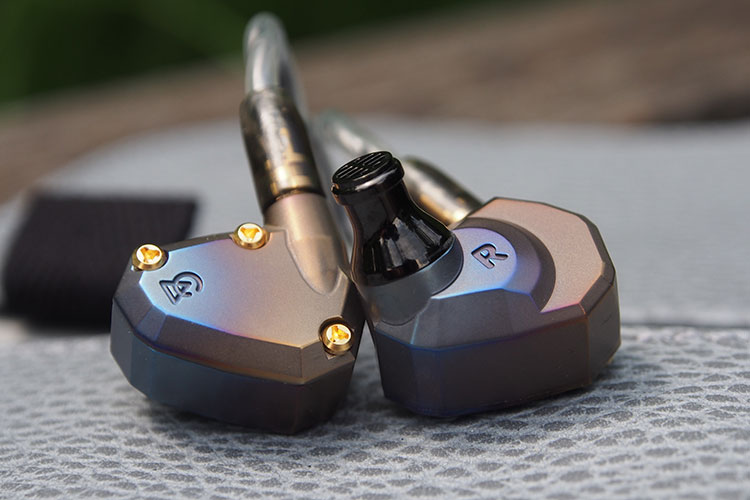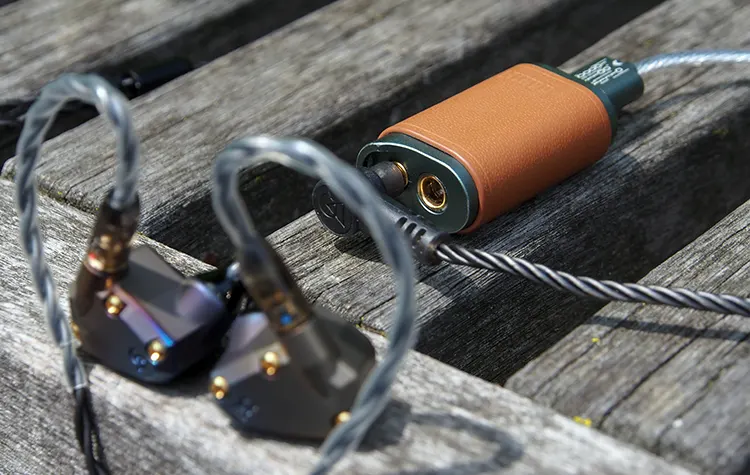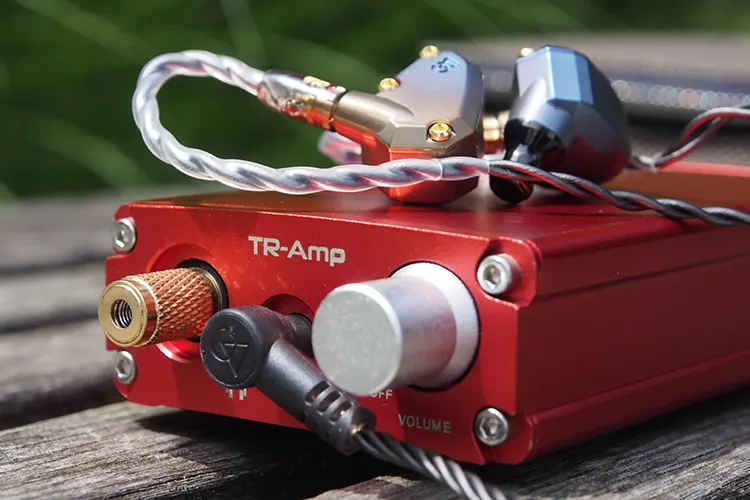Sound Impressions
Summary
The Moon Rover has a neutral-leaning tune unique among the current Campfire Audio lineup. It produces a warm tilt to its sound output while offering a natural balance between lows, mids, and highs.
The new 12mm planar magnetic driver is smooth, refined, and performs effortlessly, making the Moon Rover comfortable with numerous genres. It handles everything competently, regardless of how congested or complicated the track gets.
The upper-end extension is plentiful, and the driver digs deep to provide a solid amount of visceral feedback. It has a natural timbre that helps the Moon Rover work with live music as well as it does with electronic tunes.
Bass
The Moon Rover has a clean, tight bass response showing off solid impact with a snappy decay that helps keep things coherent during congested passages.
Extension is good with a solid balance of mid- and sub-bass emphasis that injects a moderate amount of warmth into the signature
Texturing is quite good with nuanced details being picked up and replicated appropriately. I enjoy it with grungy, distortion-heavy electronic music since the Moon Rover’s planar driver picks up every bit of noise.
Since sub-bass isn’t the primary focus of the low end, the Moon Rover doesn’t provide a heavily visceral experience like other models in Campfire Audio’s lineup. The low-end presentation is more in line with the Andromeda and Ara than the Cascara or Supermoon.
Mids
The midrange of the Moon Rover is prominent and clear, emphasized nicely between the other frequencies.
A small boost around 2k gives it presence without crossing over into sounding unnatural, fatiguing, or tinny, and helps give percussive instruments prominent attack and decay qualities.
The moderate injection of warmth from the mid-bass region helps give the Moon Rover’s mids a natural, realistic timbre that isn’t dry, meaty, or overly lean. Instead, it’s well-weighted with just the right amount of warmth to benefit both male and female vocalists.
Sibilance is kept in check with the Moon Rover neither adding it to a track nor completely negating it when it is already present. Harshness is reduced though, ensuring a non-fatiguing listen.
While not the most detailed mid-range presentation Campfire Audio has produced, the amount of detail provided is more than adequate.
It feels right in line with the way detail is presented in the other frequency regions and contributes to the effortlessness of the presentation of this particular planar driver.
Treble
Treble out of the Moon Rover is balanced with neither presence nor brilliance regions stepping over the other. This gives the Moon Rover plenty of detail and good space between notes that make the most out of a near-average soundstage.
Given the impressive balance across all regions of the Moon Rover’s signature, this leaves the treble playing just as important a role as the other frequencies. The treble plays neither a support nor lead role, instead sharing the stage with the rest of the signature.
Since the brilliance region isn’t overly boosted, sparkle and shimmer are present but not overpowering. This results in a non-fatiguing, but still detailed, clear, and coherent presentation that provides well-defined notes.
Lastly, this 12mm planar driver is exceptionally well controlled, ensuring notes and tight and clean. There is no splash or sloppiness present in the output of the Moon Rover.
Staging & Dynamics
The staging of the Moon Rover is good, but not much beyond average in terms of sizing. A good sense of depth and width is present, but it’s not overly expansive thanks to a default vocal position that sits fairly close to the ear.
It’s not a huge downfall thanks to the impressive technical chops of the planar driver. Tracks are displayed with well-defined and easy-to-follow layers, with individual instruments being clear and easy to pick out and track individually.
Channel-to-channel movement is smooth and precise with clean transitions off-center and to the very edges. The Moon Rover makes for a stellar gaming companion given how precise movement is, allowing users to easily track footsteps and effects as they move around the environment.
Synergy
Efficiency
The Moon Rover has a sensitivity of 94 dB @ 1 kHz and an impedance of 22.5Ω @ 1 kHz.
Despite trying the Moon Rover with numerous devices of varying prices and quality, from a basic Apple dongle to my TEAC HA-501 desktop amp, I have yet to find anything that raises a red flag.
Nothing produced any background hiss, had issues bringing the Moon Rover up to unreasonable volumes, or lacked the nuance to listen at exceptionally low volumes (with one exception).
Paired with my HA-501, I could use the damping feature like a tuning modifier. While it required some adjustments to the bass and treble settings, it sounded nice from my FX Audio D302 Pro which can often add harshness to neutral-leaning tunes.
The Moon Rover is quite versatile and accepting of a wide variety of sources.
Pairings
The Campfire Audio Moon Rover was tested primarily with the ddHiFi TC44C dongle, Earmen TR-Amp portable amplifier, and TEAC HA-501 desktop amp.
ddHiFi’s TC44C is a good pairing for the Moon Rover. With plenty of power, a black background, and a mostly neutral signature that leans warm, the TC44C hardly alters the base sound of the Moon Rover.
Through either the 3.5mm single-ended output or the 4.4mm balanced output, if swapping the Moon Rover over to a balanced cable, the experience is distortion and hiss-free. Compared to our next source, the TC44C loses sub-bass emphasis resulting in a less visceral experience.
The EarMen TR-Amp is an absolute powerhouse, capable of driving products as demanding as the Hifiman Susvara. It doesn’t break a sweat bringing the Moon Rover up to volume.
Low volumes are an issue though. The TR-Amp’s volume knob biases the right channel below ~10% which ensures the Moon Rover is always running near what is my typical listening volume, at minimum.
My TEAC HA-501 on the other hand is a perfect fit for the Moon Rover. Not only can it drive the earphones at any volume, from barely audible to blisteringly loud, but the damping feature can alter the emphasis of the upper mid-range and lower treble giving you a subtle tuning option when you want more emphasis in those areas.
When paired with IEMs, the damping feature on this amp often adds background hiss when used at higher settings. It was refreshing to know this negative aspect was absent when paired with the Moon Rover.
The warm, analog sound output of the HA-501 is a lovely match for the Moon Rover, playing into the earphone’s refined effortlessness while doing nothing to hinder its tight, punchy, detailed, and balanced output.




